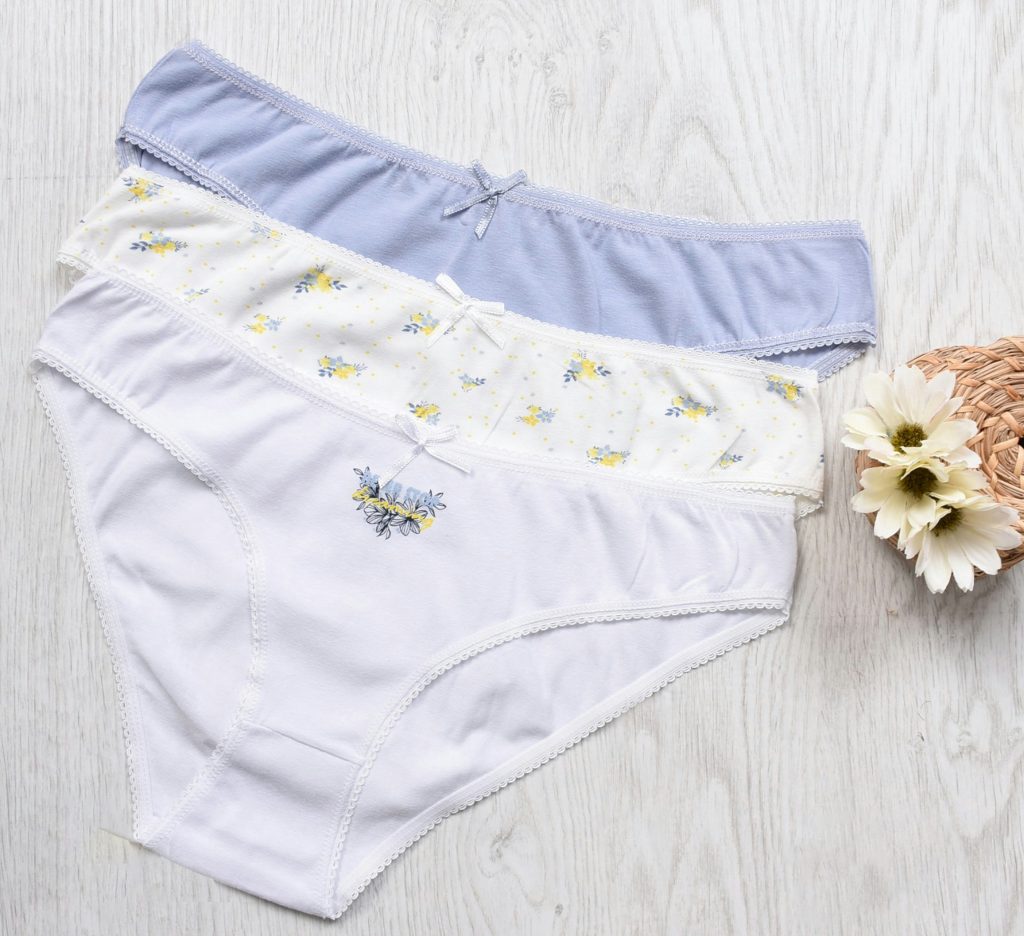By Tim Lambert
Knickers in the 19th Century
Women did not usually wear knickers until the end of the 18th century. However, after about 1800, women also wore underwear called drawers. Today we still say a pair of knickers. That is because in the early 19th century, women’s underwear consisted of two separate legs joined at the waist. They were a ‘pair’ of knickers. The word drawers was invented because underwear for women was drawn on.
Why do we call them knickers? It’s because of a novel by Washington Irving called History of New York by Diedrich Knickerbocker. He was, supposedly, a Dutchman living in New York. In Britain, the illustrations for the book showed a Dutchman wearing long, loose-fitting garments on his lower body. When men wore loose trousers for playing sports, they were sometimes called knickerbockers. However, in Britain, women’s underwear was soon called knickerbockers too. In the late 19th century, the word was shortened to knickers.
In the USA, knickers are called panties, which is derived from the word pants (American for trousers). In the early 20th century, panties became the name for female underwear in the USA. The word panties is sometimes used in the UK, but it has never replaced the word knickers.
At first, knickers were usually very plain, but in the late 19th century, they were sometimes decorated with lace and bands. In the 1860s, some women began to wear colored drawers, although white remained the most popular colour. In the winter, women often wore woolen knickers. No doubt they were needed in the days before central heating!
In the 19th century, knickers were sometimes called bloomers. A woman named Elizabeth Miller invented loose trousers to be worn by women. After 1849, Amelia Bloomer promoted the idea, and they became known as bloomers after her. In time, long drawers became known as bloomers. The word lingerie is derived from the French word for linen, lin. Lingerie was things made from linen.
In 2015, a pair of Queen Victoria’s knickers were sold at an auction for £12,090.
Knickers in the 20th Century
In the 19th century, knickers were usually open between the legs, but in the 20th century, closed knickers replaced them. In 1910, stockings and knickers were made of rayon (at first, rayon was called artificial silk). In Britain, nylon knickers were introduced in 1947. However, in the early 20th century, poor women sometimes made pairs of knickers from flour sacks.
At first, knickers were tied in place with strings or held in place with buttons. Elastic was invented in 1820, but it was, at first, used for gloves, stockings, and boots, not underwear. Elastic was added to knickers in the 1920s.
In the 19th century, knickers came down to below the knee. In the 1920s, they became shorter. They ended above the knee. At that time, pink, ivory, or peach knickers were popular. (Knickers with short legs were called French knickers because many people thought anything risque came from France). By the 1940s and 1950s, many women wore briefs.
Meanwhile, in Britain during the Second World War, used parachutes were sometimes recycled by women to make silk knickers. Then, in 1949, an American tennis player named Gertrude Moran or Gussie Moran (1923-2013) caused a sensation when she appeared at Wimbledon wearing frilly knickers. She was called Gorgeous Gussie, and it was very daring in 1949! However, in the 1950s, frilly knickers became popular.
In the 20th century, girls often wore PE knickers during PE lessons. They were usually made of dark colours such as navy blue or bottle green.
In the 1970s, knickers became briefer still. Thongs were introduced in the USA in 1981. They became popular in Britain in the 1990s. At the start of the 21st century, boy shorts became popular. Today, the most popular colour for knickers is black.
Finally, it’s not certain how the phrase ‘don’t get your knickers in a twist’ began, but it seems to have started in several countries around the same time. In Australia, the phrase ‘don’t get your knickers in a knot’ was used in the 1960s. In Britain, the phrase ‘don’t get your knickers in a twist’ was first recorded in 1970. In the USA, the phrase ‘don’t get your panties in a bunch’ was in use by 1972.

Last revised 2025